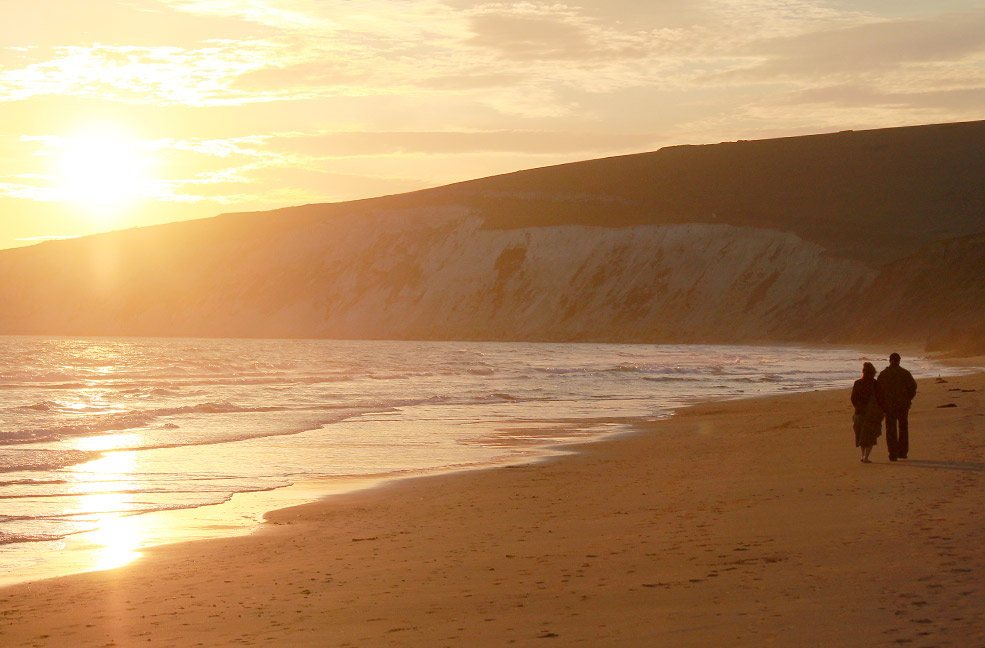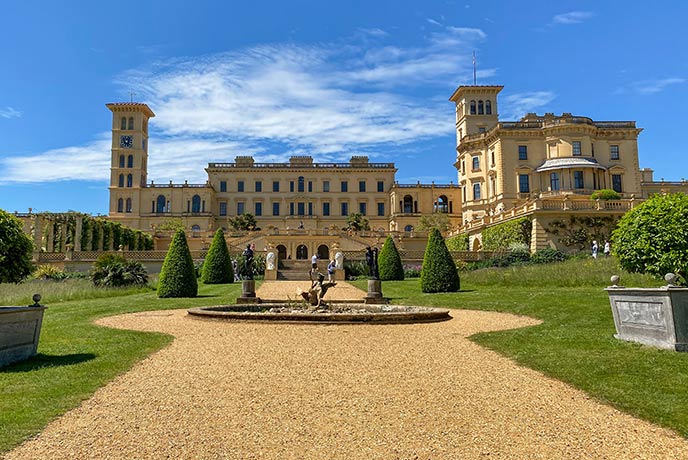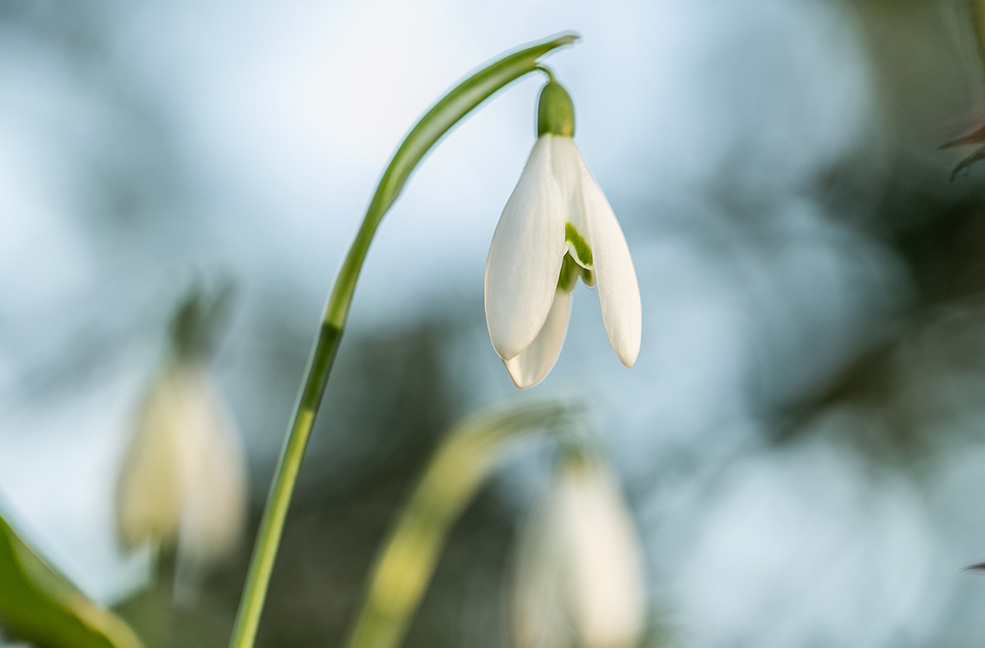Green-fingered visitors to the Isle of Wight can enjoy lovingly tended gardens, which have thrived over decades and sometimes even centuries. The National Trust and English Heritage are responsible for some of the most spectacular displays, from the borders and flowerpot trails at Mottistone to Victoria’s famous terrace at Osborne.
However, there are plenty of public spaces and other attractions that deliver a welcome place to breathe. Rylstone Gardens and Ventnor Park are two of the finest public parks on the Island while the illuminated gardens of Shanklin Chine are something special on a summer’s evening.
Stories of former residents and visitors are told at other historic gardens. Tennyson’s Farringford has been beautifully restored to showcase the great poet’s designs while Carisbrooke Priory holds a humble history as a house of prayer. Make time for a trip to Ventnor Botanic Gardens, ‘Britain’s hottest garden’, which displays stunning plants from around the world on a site that once played a vital role in improving public health.
Here’s a round up of what’s on offer when it comes to the best gardens on the Isle of Wight.
Mottistone Gardens and Estate, West Wight
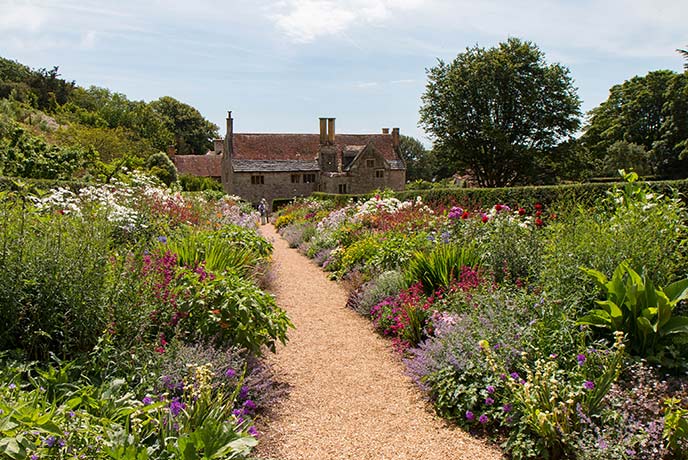
The glorious gardens of Mottistone sit within the grounds of a manor house with a history dating back nearly a millennium. The house itself is privately owned, but the National Trust cares for the hilly grounds that offer something different in every season – as well as unexpected sea views.
The centrepiece of the gardens of Mottistone are the parallel herbaceous borders that make for a colourful summer scene with the backdrop of the manor house. The nearby wildflower walkway was planted a couple of years ago and provides a wonderful contrast to the pristine borders, as well as a thriving home for butterflies and bees.
To the side, you’ll find Mottistone’s organic kitchen garden with its neatly arranged rows of vegetables. Gardeners at Mottistone pride themselves on ‘companion planting’ to keep away unwanted creepy crawlies.
The Island’s warmer climate is well exploited at the front garden with exotic plants displayed, including yuccas.
Younger visitors are well catered for, which should give parents a moment to admire the flowers. The National Trust often provides a flowerpot trail, with celebrity-themed characters such as Harry Pot-ter and Benedict Cucumber-Patch. On the hillside is a den building area, where children can really get stuck in!
Allow an hour to sit in the outdoor tearooms and explore the quirky shack from the 1930s which served as a garden office. It provides a fascinating snapshot of early 20th century life at Mottistone.
Ventnor Botanic Garden, South Wight
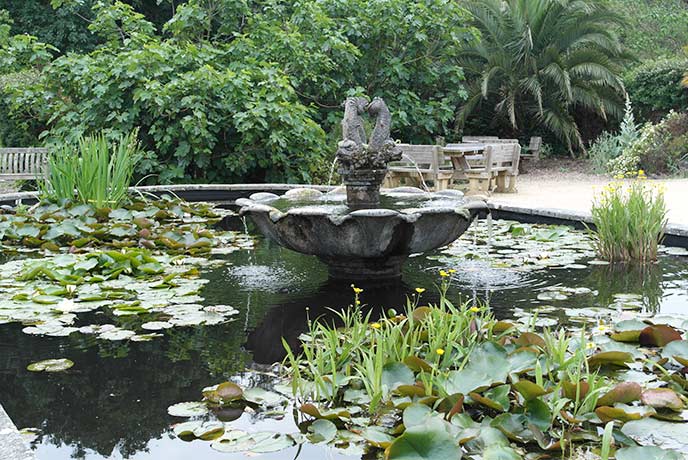
Ventnor’s Botanic Gardens holds a curious history as the former home of the National Hospital for Diseases of the Chest. The southern location and shelter offered by St Boniface Down meant that it was an ideal spot for patients from across the country to recuperate.
After medical developments made it redundant, the site was developed into a beautiful botanical garden where plants from around the world thrive. The location rarely sees frost and rainfall is below average for the UK, giving the gardens a Mediterranean feel.
Gardeners can enjoy rare sights in an English garden such as flowering aloes, large agaves, cacti and succulents as well as colourful echiums and palm trees. Other parts of the world are well catered for with Australian, Japanese and South African terraces and a New Zealand garden. Highlights include the Australian eucalyptus living alongside glorious ferns and callistemon (also known as bottlebrushes).
Pop into the Tropical House via a derelict mineshaft and you’ll be greeted with a wall of warmth and cascade of colour. The giant waterlily plants are a favourite, whilst the Brazilian Dutchman’s Pipe is an unusual sight (and smell!).
Allow a little time to explore beyond Ventnor Botanic Garden. The nearest of the Isle of Wight's beaches is Steephill Cove, which is inaccessible by car but has a special charm. Thatched cottages overlook the pretty bay, which is popular for rockpooling and paddling or just for an afternoon on a deckchair.
Ventnor Park, South Wight
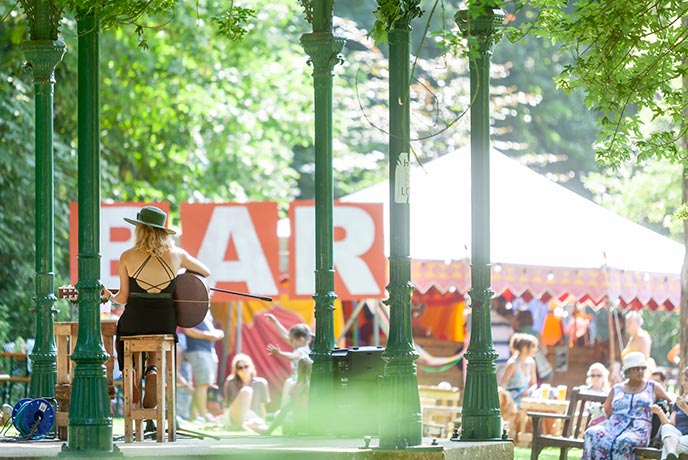
Ventnor’s public park is a gem that is worth visiting alongside the nearby Botanic Garden. The sunny weather and cliffside shelter makes for a gorgeous spot to enjoy the flowers or spend an hour on the putting green. Expect to see flowerbeds that are well stocked with colour as well as a pretty stream trickling through the park.
Ventnor Park was once owned by the Hambrough family, who also owned the since-disappeared Steephill Castle. In the early 20th century, the park gained a bandstand, which was rescued from Ventnor’s former pier. You can still see the entrance to Ventnor’s pier on the seafront. Nowadays, the bandstand hosts regular concerts at weekends and on bank holidays during the warmer months as well as playing host to acts during one of the Isle of Wight's most popular festivals, Ventnor Fringe.
Osborne, North Wight
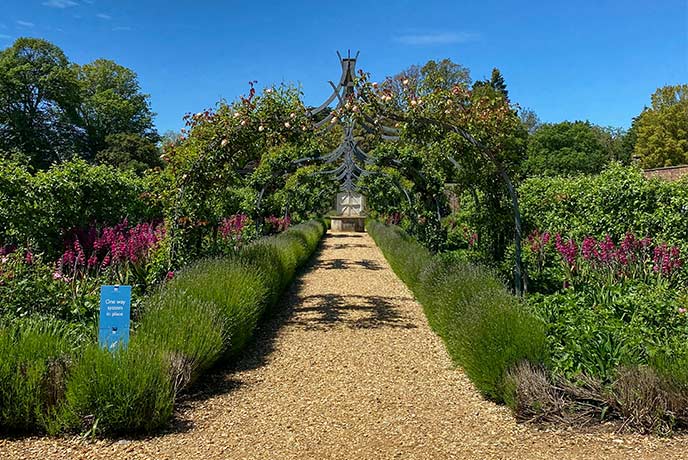
Queen Victoria’s beloved palace by the sea includes extensive grounds for exploring. You’ll want to allow a full day if you want to make the most of the historic house, the beach and the gardens.
The terrace gardens provide perhaps the best photo opportunities, with the grand Italian-style house overlooking colourful bedding as well as a pergola draped in clematis. Meanwhile, the walled gardens put on an impressive display covering around an acre of flowers and fruits.
Osborne’s Swiss Cottage is a fascinating insight into royal life. The Queen’s children spent their time in the ultimate playhouse, which is surrounded by well-kept vegetable patches. Each Prince and Princess’s allotment is marked out, alongside their individual wheelbarrows and gardening tools.
The walk down to the beach is a treat. Take the Rhododendron Walk for a seasonal display of colour and enjoy an ice cream overlooking the Solent.
Rylstone Gardens and Shanklin Chine, East Wight
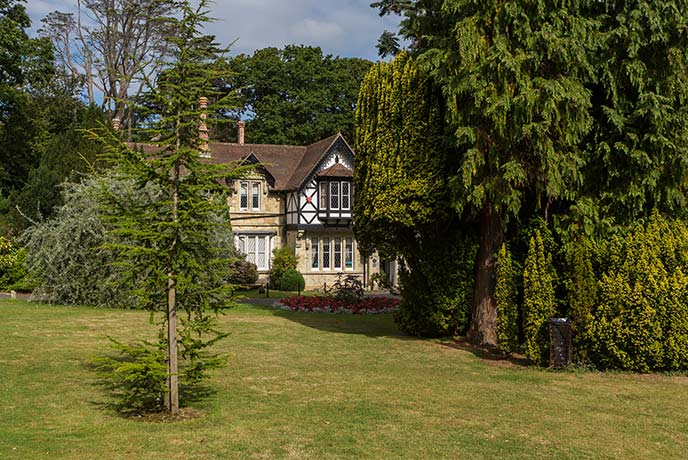
Rylstone Gardens and Shanklin Chine are adjacent green spaces that are amongst the most beloved on the Isle of Wight.
Begin with a visit to the immaculately-kept public park of Rylstone Gardens, which bursts with seasonal planting. It also has a rich variety of trees including atlas cedar and other pines, along with giant sequoia. On summer weekends, Rylstone’s bandstand features local brass bands while other visitors stop for a game of minigolf or refreshment in the tea gardens.
Meanwhile, Shanklin Chine is a paid-attraction that dates back more than two centuries and boasts more than 150 varieties of wild plants. The Chine provides a dramatic route down to Shanklin’s famous thatched pub on the beach with a waterfall and historic displays along the way. Gardeners will enjoy the fuchsia, winter-flowering heliotrope, ferns and golden saxifrage as well as the vast leaves of the gunnera manicata. You might even catch a whiff of wild garlic!
The Chine offers a different experience at night with its illuminations creating an unforgettable stroll down to the beach for an evening dining on the esplanade.
Farringford, West Wight
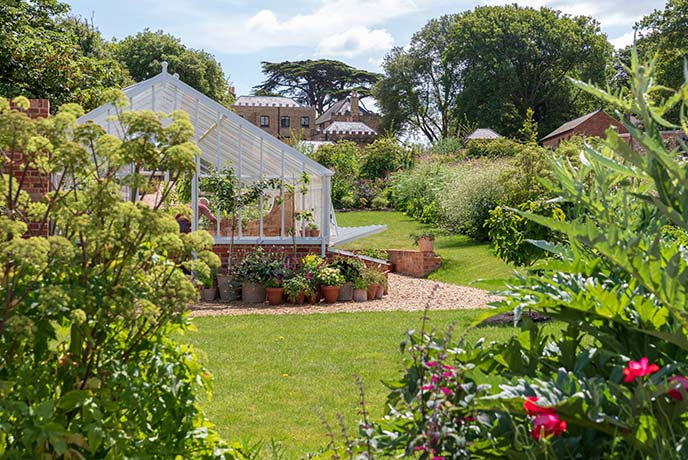
Alfred Lord Tennyson made Farringford his beloved West Wight home in 1853. The Poet Laureate was a keen gardener and set about landscaping, planting and tending to the grounds overlooking Freshwater Bay until his death nearly four decades later. The garden is famed for its “careless order’d” style, which Tennyson described in verse written a year after his arrival on the estate. The layout appears more random than the more traditional gardens but the informality has a charm of its own.
The modern-day custodians of Farringford have put much love and attention into ensuring that this character has survived and been restored. Many plants and trees referred to in Tennyson’s poems have been identified thanks to paintings and the rich words of the poet himself. Farringford’s Walled Garden brings cascades of colour, including delphinium, oriental poppies and tobacco plants, as well as vegetables and fruit trees. Look out for the fig, which is trained within a replica of Tennyson’s Victorian greenhouse.
After you’ve visited the gardens, take a wander round Farringford’s copse and parkland or stroll up to Tennyson Down with its impressive views of Freshwater Bay. Check out our Freshwater Bay webcam for a preview of the beach!
Princess Beatrice Gardens at Carisbrooke Castle, Central Wight

The Isle of Wight’s royal connections are abundant, including a seaside castle in Yarmouth built by order of King Henry VIII and the magnificent Osborne, which became home to Queen Victoria.
Carisbrooke Castle, one of the many great castles on the Isle of Wight, holds its own royal stories, including its use as a prison for King Charles I. However, it was its later role as a home for Princess Beatrice that led to the development of the attractive gardens within the castle’s walls. The Queen’s youngest daughter was Governor of the Isle of Wight and spent many hours in her privy garden. In 2009, English Heritage set about reinventing the garden with the help of presenter Chris Beardshaw.
The result is a gorgeous garden that – while compact in size – is a treat for visitors with its herbaceous borders, fruit trees, neatly pruned hedging and a centrepiece fountain. In summer, enjoy the delphiniums and the buzz of bees amongst the meadow rue. In spring, cowslips, bluebells, snowdrops and primroses provide a colourful accompaniment to the castle’s imposing ramparts.
Visitors will spot the garden’s own ‘war horse’. The half size sculpture depicts General Jack Seely riding Warrior. The horse was bred on the Isle of Wight and survived several years on the battlefield before returning to the Island and winning a prestigious race.
If you have a spare hour, take a walk around the outside of the castle and past the fords and historic church in Carisbrooke.
Carisbrooke Priory, Central Wight
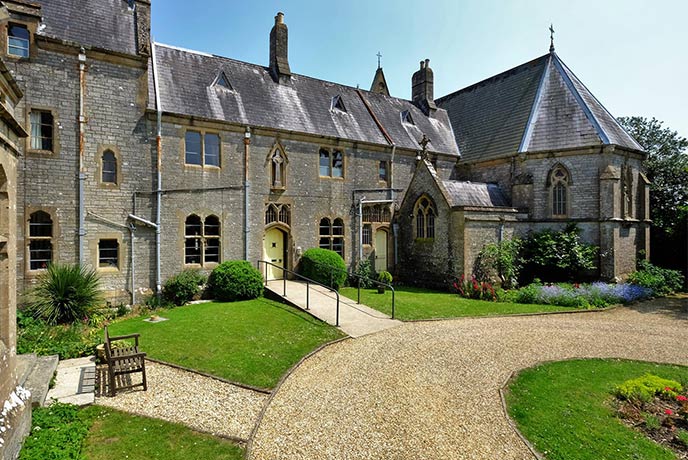
Carisbrooke Priory’s secluded gardens are something of a hidden gem and they are only a few minutes walk from Carisbrooke Castle. The two-acre site is a former nunnery that is described as offering a ‘balance between neatness and wildness, productivity and amenity’.
It now operates as a charity-led Christian house of prayer with the gardens providing a space for relaxing and reflecting. Volunteers can be found tending the orchards and working on the allotments, while others enjoy a moment of quiet reflection.
The cloister garden is a quirky treat, with a small green space that can be viewed from four sides of the house. While you are visiting, pop into the tea rooms or the book shop or explore the chapel and house, which provided simple living for the resident sisters for 133 years.
Whichever gardens take your fancy, you will find one of our beautiful Isle of Wight holiday cottages nearby.


